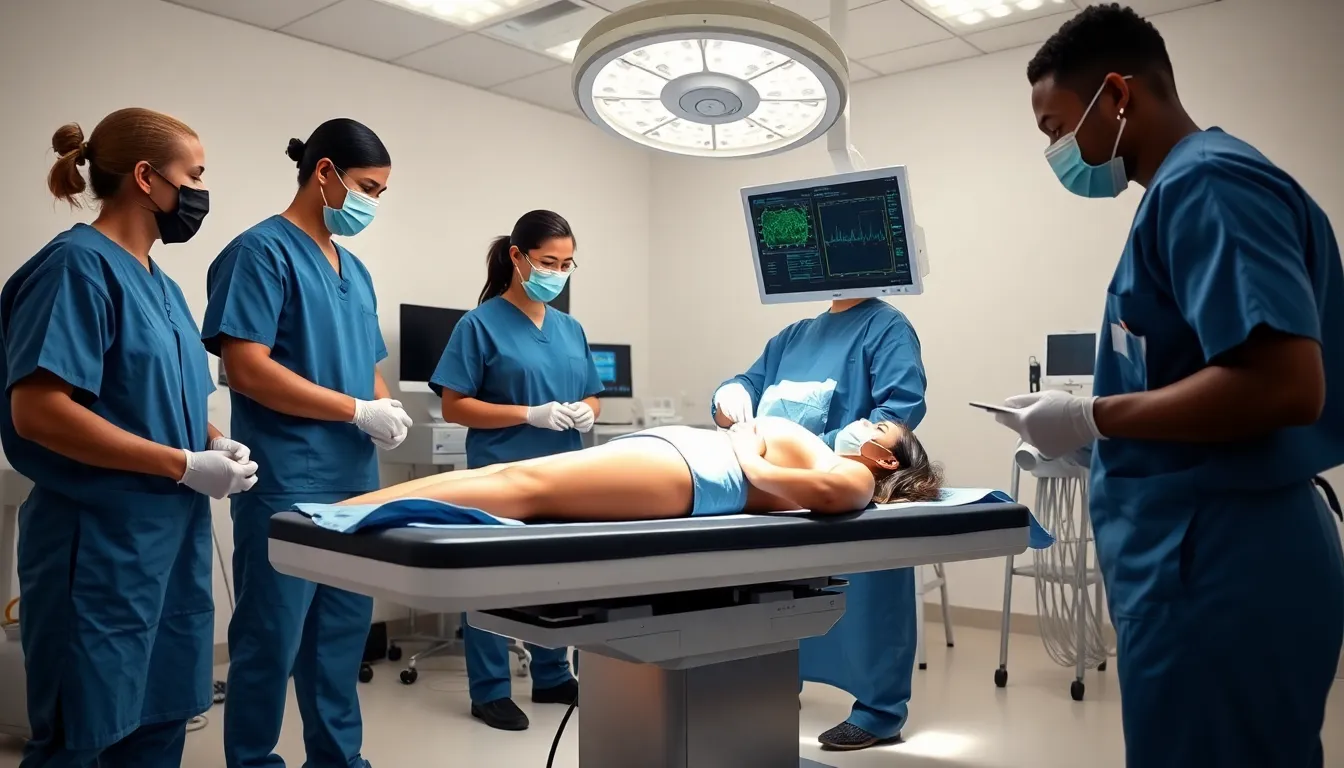Abdominoplasty, or as many like to call it, the tummy tuck, might just be the makeover that’s easier than reinventing your wardrobe. Ever looked in the mirror, and thought, “If only I could get rid of this stubborn belly fat?” Well, this surgical procedure can remove that pesky excess skin and fat around the abdomen, giving you a flatter, toned look. But hold your horses. Before diving into the world of cosmetic surgery, it’s essential to know what it entails, who qualifies for it, and what happens during recovery. Let’s explore the ins and outs of abdominoplasty.
What Is Abdominoplasty?

Abdominoplasty, commonly referred to as a tummy tuck, is a surgical procedure designed to contour the abdomen by removing excess skin and fat. Also, it tightens the abdominal muscles, which may have weakened due to various factors such as pregnancy, aging, or significant weight loss. The primary goal? To achieve a smoother and firmer stomach that complements a person’s overall figure.
During the procedure, the surgeon makes incisions in the lower abdomen, potentially extending from hip to hip. This allows for precise manipulation of the skin and underlying tissues, facilitating the removal of unwanted fat. In some cases, the surgeon can also reposition the belly button for a more natural appearance.
This surgical route can significantly boost self-esteem and body image, particularly for individuals frustrated by stubborn areas that diet and exercise just can’t seem to change.
Candidates for Abdominoplasty
Identifying the right candidates for abdominoplasty is crucial. Generally, ideal candidates include:
- Individuals who have stabilized their weight but still have excess abdominal fat or skin.
- Women who have experienced significant changes in their bodies following pregnancy.
- Those looking to enhance the appearance of their abdomen due to factors like genetics, aging, or previous surgeries.
But, it’s important for candidates to be in good overall health, as certain medical conditions, such as diabetes or heart issues, may complicate surgery and recovery. Also, those planning to lose more weight or become pregnant again should ideally wait until after their procedure, as these factors can affect the outcomes.
Types of Abdominoplasty
Abdominoplasty isn’t a one-size-fits-all solution. There are several variations tailored to an individual’s needs:
Full Abdominoplasty
This type involves a larger incision and is suitable for individuals with excess skin and fat above and below the belly button. The surgeon can maneuver both areas for comprehensive results.
Mini Abdominoplasty
Consider this option when dealing with minimal excess skin, usually below the belly button. The incision is smaller, leading to a quicker recovery.
Extended Abdominoplasty
This variant is ideal for those looking to address not just the abdomen but also areas around the flanks or hips. It’s a more extensive procedure requiring a longer incision.
Circumferential Abdominoplasty
Often recommended for patients who have undergone significant weight loss, this type of surgery treats the entire circumference of the body, from abdomen to buttocks, by addressing skin laxity in multiple areas.
The Abdominoplasty Procedure
When it comes to the procedure itself, it often requires around two to five hours depending on the type selected and the complexity of the case. Here’s a brief overview of what happens:
- Anesthesia: The surgeon will administer either general anesthesia or intravenous sedation for comfort during the surgery.
- Incision: After the anesthesia kicks in, the surgeon makes the necessary incisions based on the type of abdominoplasty being performed.
- Sculpting the Abdomen: Excess fat and skin are meticulously removed. The surgeon may also tighten the underlying muscles for a firmer appearance.
- Closing the Incisions: Once the desired results are achieved, the incisions are closed with sutures or adhesive.
Typically, patients will remain in a recovery room for observation before being cleared to go home, often with detailed aftercare instructions.
Recovery and Aftercare
Recovery from abdominoplasty involves several stages. Initially, patients may experience swelling, bruising, and some discomfort around the surgical site. Managing pain is essential, as it allows for an effective recovery:
- Rest: Ample rest is vital. Patients should plan on taking at least a week off work, depending on the nature of their job.
- Post-operative Care: Surgeons will suggest specific post-operative instructions, including how to care for incisions and when to start light activities.
- Gradual Return to Activity: Slowly increasing physical activity after surgery helps promote circulation and healing but should be approached with caution.
Most individuals begin to see the final results of their abdominoplasty within three to six months as swelling decreases and the body heals.
Potential Risks and Complications
Like any surgery, abdominoplasty does involve some risks, though complications are not common. Potential risks include:
- Infection: While surgeons take precautions, infection can occur in any surgical procedure.
- Scarring: Scars will be present after surgery, but they typically fade over time.
- Blood Clots: The risk of deep vein thrombosis, a type of blood clot, is a concern for patients following any surgical procedure.
Discussing these risks with the surgeon during initial consultations is essential. They can provide strategies for minimizing complications and ensuring a safe recovery.
Long-Term Results and Considerations
Long-term, abdominoplasty can provide substantial results that may last for years, especially when paired with a healthy lifestyle. But, several considerations include:
- Weight Maintenance: Gaining or losing significant weight post-surgery can alter the results, leading to a potential need for revision surgery.
- Aging: Natural aging will continue to affect skin elasticity, and future pregnancies can also impact abdominal appearance.
- Follow-up Care: Regular follow-ups with the surgeon can help monitor healing and discuss any concerns that arise over time.
In essence, while abdominoplasty offers a path to a flatter abdomen, it requires ongoing commitment to maintaining lifestyle and health for lasting results.













